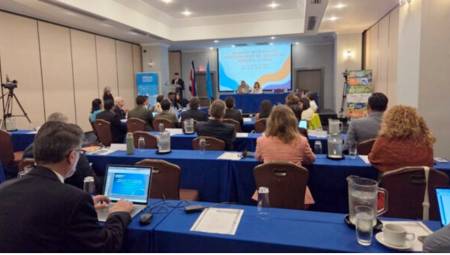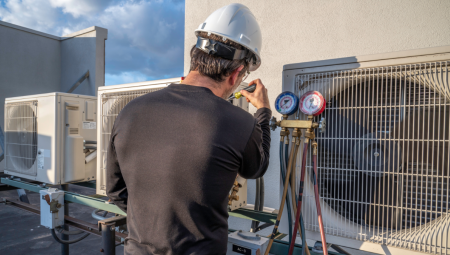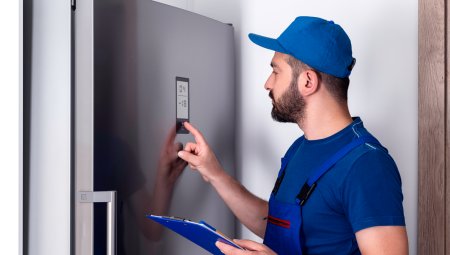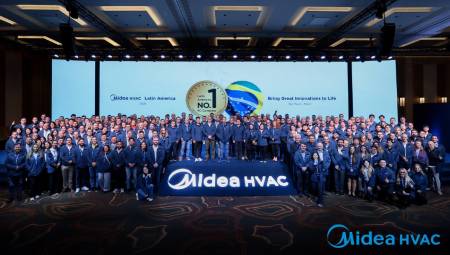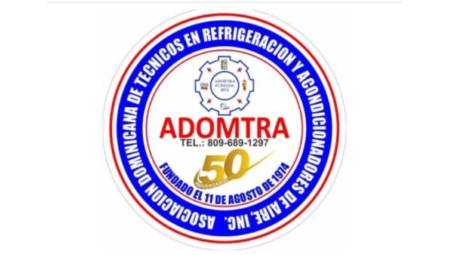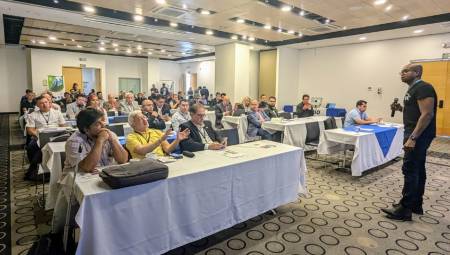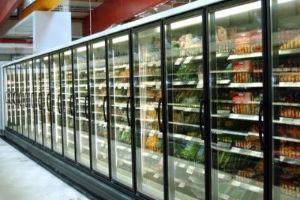 In all cases, without exceptions, it will always be better to take the necessary measures and appropriate care to prevent a refrigeration equipment from being damaged. Repairing parts or buying a new machine is significantly more expensive than doing proper preventive maintenance.
In all cases, without exceptions, it will always be better to take the necessary measures and appropriate care to prevent a refrigeration equipment from being damaged. Repairing parts or buying a new machine is significantly more expensive than doing proper preventive maintenance.
by: María Cecilia Hernández
When analyzing, measuring and comparing the advantages and disadvantages between doing good preventive maintenance and doing a corrective cut, the results are obvious. The positive consequences, in every way, of doing the former are irrefutable, hence the truth of that famous phrase: "It is better to be safe than sorry."
In the eighth version of Refriaméricas, the congress for commercial and industrial refrigeration in Latin America that will take place between June 16 and 17 of this year at the Plaza Mayor Convention Center in Medellín, will be addressed, among an agenda of topics of great topicality and relevance, a fundamental issue to guarantee the efficiency and durability of the equipment: the preventive maintenance of a refrigeration system.
Ordinary people and even entrepreneurs in the industry ignore the proper procedure that must be followed with the equipment of this segment, and the consequences of this ignorance are very varied and, in most cases, very negative for the pocket.
ACR LATINOAMÉRICA wanted to talk with some experts in the field as a prelude to Refriaméricas 2011, with the aim of giving some light to our readers on the best practices of using a refrigeration system.
Costly consequences
For Isaac Sánchez, independent consultant and entrepreneur of the refrigeration industry, based in La Florida, United States, "the importance of doing a good preventive maintenance of the machines lies in avoiding at all costs to do subsequent corrective maintenance, which in the long run are much more expensive and harmful to the equipment".
But not everyone is trained to clean a system that every day brings greater technological advances and consequently greater complexity; it is not enough to read the instruction manual that normally comes with the equipment, nor to have a suitcase full of tools. Experimenting can be worse.
As indicated by Edwin Cañón, technical service coordinator of the Colombian company Polipanel, before doing preventive maintenance it is better to put yourself in context and find out the type of system that is going to be visited. It is important to know, for example, what it was designed for, to understand the installation and its daily use.
"A cooling system is not always designed the same, its implementation depends on multiple factors and this is important to know. It is necessary to take into account fundamental elements such as the thermal load, the type of product that is refrigerated there, what are the quantities of product (in kilograms) that are preserved, if they are refrigerated or frozen and how often. Other thermal loads such as the evaporator, the lamps and the number of people working inside the cold room must be considered. It is necessary to know how many openings the system door has, to make the proper calculations and ensure a better temperature quality," explains Cañón.
As you will see we are not talking about a simple system, the technical complexity merits contacting the right personnel to carry out the maintenance task. Issues such as the handling of ammonia involve special care due to its high dangerousness, force to constantly check the hoses with which it is poured, check the valves to avoid leaks and pay permanent attention to everything that may mean a danger or a valuable loss of equipment or product.
For Isaac Sánchez most people prefer to ignore this type of matter, they do not have the necessary care in both handling and maintenance and wait until the moment when the machine is damaged. "To think about buying another machine is to make a great expenditure of money and if that is added to that that the treatment that will be given to the new equipment will be the same, without the necessary care, then we must foresee that in a short time the system or parts of it will have to be replaced again."
Don't do it yourself
After drawing attention to the terrible consequences that come with not doing good preventive maintenance, it is time to take action. If you decide to implement this good practice in your company or in your home, listen to an expert, because no one can do it better than him. This is indicated by Edwin Cañón.
"You must have trained personnel, professionals who have the necessary equipment, tools and protection; you have to have the catalog at hand because currently most of the equipment brings electronic controllers. The person in charge of doing the maintenance must have training in electricity, since almost all the machines in this market are electromechanical, so the technician must know how to manipulate an electrical board. It is important that the owner of the system takes into account that preventive maintenance is executed with the equipment in operation, unless an electrical spare part has to be changed in such a way that it merits pausing or de-energizing the machine, but this is more common in cases of corrective maintenance, "says Cañón in detail.
There are elements of protection that every good technician should use when executing a cleaning and a review of the system. The kit basically consists of monoglasses, gloves that isolate but at the same time allow the correct handling of small and pulse tools, steel tip boots and work overalls.
The step by step
Both experts agree that one of the most important steps of preventive maintenance is the cleaning of the filters and the condenser, as they fill very easily with dust and this is the main cause of the increase in energy consumption and the loss of efficiency of the equipment.
The procedural protocol is almost the same either in the north or in the south of the continent, so there is no room for improvisations or experimentations. A good technician will comply with the following recommendations:
Before entering the engine room, the person in charge of doing the maintenance has to be prepared with his protective equipment and his necessary tools.
When entering the room you have to analyze the connections, confirm that the equipment is working correctly and analyze what type of installation is in place.
It is essential to check if the system has alarms.
It is necessary to check that in the engine room there is no leakage of liquids such as oil, ammonia, among other substances.
Locate the evaporator look that its motors and fans are working properly and that it is not clogged with any block of ice that may form.
Observe the state of the tubes and detail that they are not misadjusted and that they do not present vibrations.
After this initial review, a direct procedure begins on the machine: take pressures, verify that the measurements and values are appropriate for the type of installation and check the electrical consumption (in Amps) of the equipment.
Subsequently, a total adjustment of all the electrical terminals of the equipment must be made because these parts heat up, dilate and become unadjusted over time. When this happens, shorts can occur.
Then, if possible and the conditions of the installation allow it, it is important to clean the condenser with water as well as the rest of the machine. Remove the pressure gauges and document the values that were recorded. With this information that is collected in the pressure gauges along with the PT table, it can be corroborated if the equipment is operating normally and conclude that there is no loss of refrigerant, that temperatures are normal and that the equipment is operating in optimal conditions.



